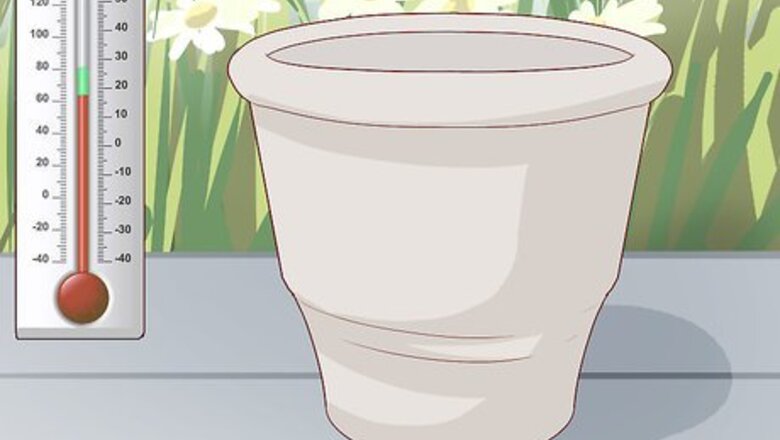
views
X
Expert Source
Monique CapanelliPlant Specialist
Expert Interview. 22 September 2020.
We’ve put together the ultimate plumeria care guide to help you nurture and grow your very own. The steps below will walk you through everything you need to know, like how to plant plumeria, water it, and give it the conditions it needs to thrive.
Choosing the Environment and Materials
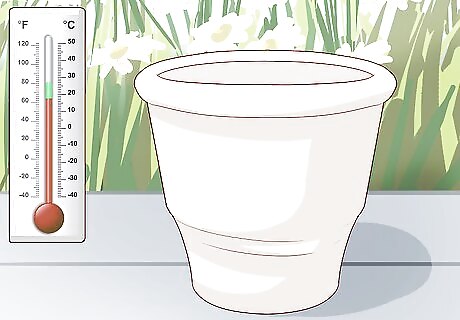
Choose a warm location. Plumerias require temperatures of at least 65 to 80 degrees Fahrenheit (about 18 to 27 degrees Celsius). They will not survive in temperatures below 55 degrees Fahrenheit (about 13 degrees Celsius). Any parts of the plant exposed to freezing temperatures will die. Therefore, it is important to choose the right location. If your climate regularly or seasonally gets colder than 55 degrees Fahrenheit (about 13 degrees Celsius), do not plant your plumeria in the ground outside. Instead, plant it in a container that you can keep inside when it gets cold. Even though plumerias have strict temperature requirements, they are flexible in that they can flourish outside or inside. Plumerias can survive in very hot temperatures, even over 100 degrees Fahrenheit (about 38 degrees Celsius).
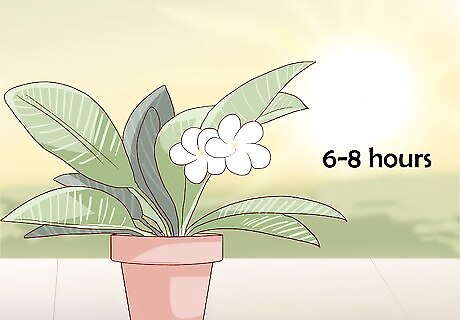
Ensure adequate sunlight. Plumerias grow best in full sunlight, which is at least 6 hours a day. Find a location where the tree will be exposed to regular sunlight. Plumerias grow well in greenhouses or near a big window with lots of light if you are growing it inside.

Ensure adequate space outside. If planting your plumeria outside, you can plant it in a pot or in the ground. If planting plumerias in the ground, they will need to be planted 10 to 20 feet apart so that their roots have adequate space to grow. You can plant a root ball in a hole that is the same depth as the roots, but 2 to 3 times the width. Choose a planting location where the soil drains well and water doesn't puddle after a rainfall. Avoid locations where the plumeria will be exposed to heat radiating off a brick or concrete wall.
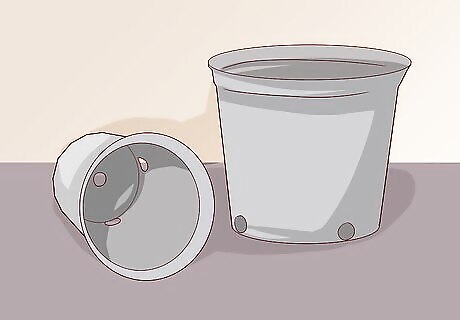
Use black nursery containers. Planting your plumeria in a container is useful so that you can move it inside if it gets cold. Or you can simply grow your plumeria inside year-round. If planting your plumeria in a container, be sure to use one with a hole or several holes in the bottom to provide soil and water drainage, as a plumeria won't do well with wet feet. Use at least a one gallon size container so that it has adequate room to grow. Black nursery containers are preferable to clay pots because of the porous nature of clay, which allows roots to be embedded in the walls and moisture to escape too quickly. You can find black nursery containers at your local gardening store. Plastic pots are another good option because they lack the porousness of clay.
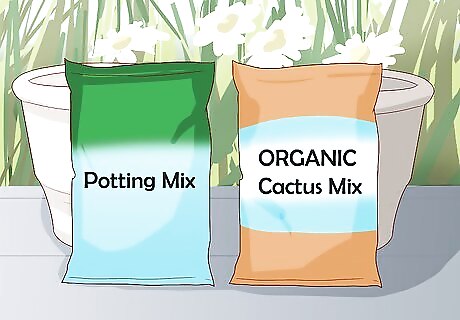
Use coarse soil. Since one of the biggest hazards to plumerias is overwatering, make sure your soil is fast draining, like cactus mix. If it is too dense or fine, it will hold too much water. Coarse soil will help ensure adequate drainage. Choose one with a slightly acidic pH as well, from around 6 to 6.7. To make sure your soil will drain properly, you can mix it with some perlite or sand. Soil can be found at your local gardening store. If you are planting your plumeria outside, make sure the soil drains well by mixing it with an organic material like manure or peat.
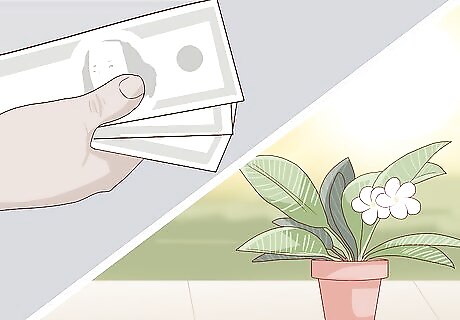
Buy a pre-planted plumeria. If you don’t want to plant your own plumeria, you can buy one already grown. Purchase a healthy plumeria tree at a local nursery. Select a compact plumeria plant with even, bright color and a sturdy, straight trunk. Look for evenly spaced branches. Avoid plants with wilted leaves or poor color.
Planting a Plumeria
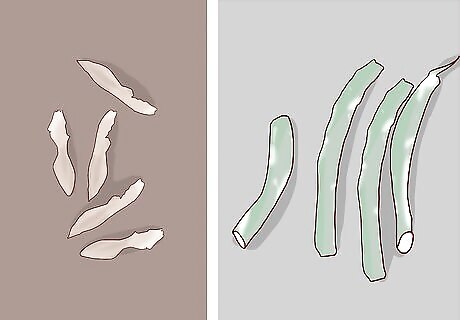
Obtain seeds or cuttings. You will need to plant plumeria seeds or cuttings to grow your own plumeria. Unfortunately, these are not very commercially available. It can be a challenge to find them, so your best bet is to obtain them from someone who already has a plumeria. Perhaps a neighbor or relative already has a plumeria and would be willing to share these with you. The seeds and cuttings can be harvested in the spring or fall to allow for the propagation of the plant. Seeds and cuttings can also be found online on websites like Amazon, although there are some concerns about the quality of these, since plumeria seeds and cuttings lose viability within a few months.
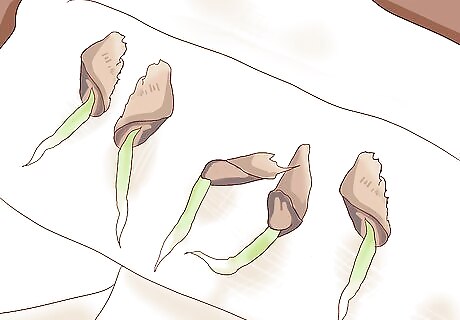
Germinate the seeds. This involves placing the seeds in a wet paper towel for one full day. They will absorb the moisture and look slightly swollen, indicating that they are ready to grow. This will help them to take root more quickly. Make sure they are in a warm environment while germinating.
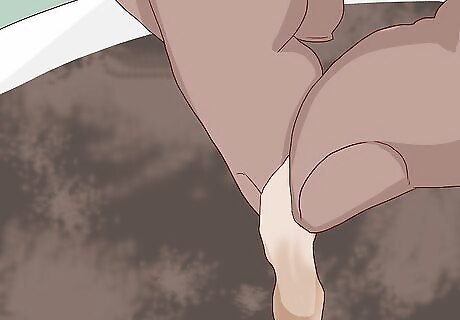
Plant the seeds or cuttings. To plant plumeria seeds or cuttings, fill the container with soil and insert the seeds about .2 inches (about 5mm) into the soil or the cuttings about 2 inches (about 5cm) into the soil. Pack soil firmly around the seeds or cuttings to hold them securely in place. If planting seeds, make sure the swollen end is at the bottom and that part of the seed wing sticks out of the soil. Only plant one seed or cutting per pot. You can plant them originally in a smaller pot (about 500 mL or 16.9 fluid ounces) and then transplant them into a larger pot (2.5 gal or 9.5 liters) after the seed begins to grow in about a week to a month. The smaller pots are known as cultivation pots and can be helpful for a plant that is just beginning to grow.
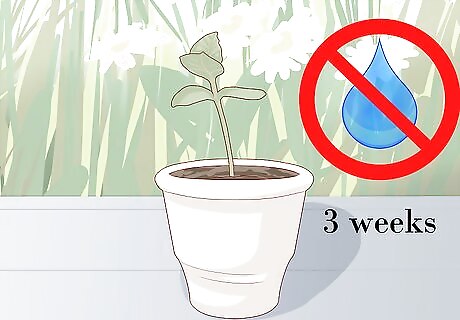
Wait to water any cuttings. When you first plant your plumeria cutting, do not water it immediately. New plumerias are very delicate and their root systems will grow with minimal water. Simply make sure it has enough light and heat for about 3 weeks and then begin to gradually add water. Start by adding a half cup of water to the plant each week. Water any pre-started plants thoroughly; there is no need to wait. In about a month or two, the plant will begin to grow leaves. This means you can regularly water it each week. When leaves are about 5 inches long, it means the plumeria is rooted and you can water it thoroughly.
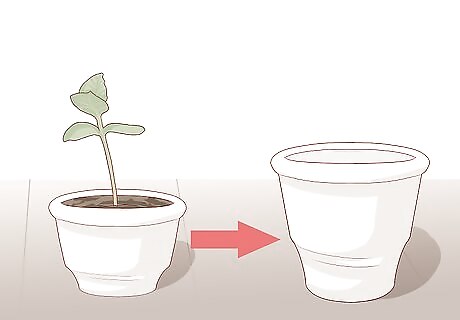
Transplant the seedlings. Once the seedling is at least 3 inches tall, you can transplant it into a larger pot. Simply remove the seedling with its soil and place it in a larger container filled with potting soil, at least a gallon in size. Simply cover the roots with soil and pack it firmly in its new pot. Opt for a plastic pot or black nursery container if possible.
Caring for a Plumeria

Water it seasonally. A plumeria should be watered frequently, at least once a week, when it is in bloom from March/April to November/December. Stop watering your plumeria when its leaves begin to drop, and do not water it when it is dormant or first rooting. Overwatering a plumeria is a big hazard to the plant. To ensure that it isn’t overwatered, allow its soil to fully dry in between waterings. When watering it, add enough water to moisten the soil, but it should never puddle on top. The amount of water will vary depending on the size of the plant.
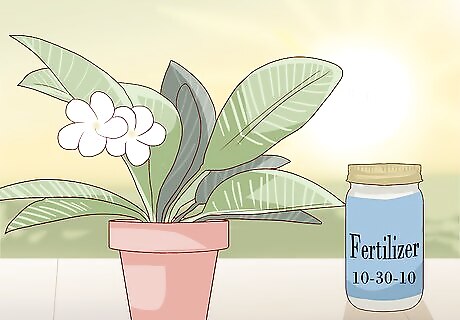
Use a high-phosphorous fertilizer. When the plumeria is in bloom, add a high-phosphorous fertilizer twice a month, such as 10-30-10 (the middle number is phosphorous). Dilute the fertilizer by adding 1-2 tsp per gallon of water. Then apply enough of the solution to moisten the soil. No fertilizer or care is required during the dormant season during winter months.

Prune if needed. Plumerias do not often need to be pruned, but if the branches start getting very long, you can prune it in late-winter. Simply cut the branches back by 1/3. This will improve the plant's health and help it to grow better.
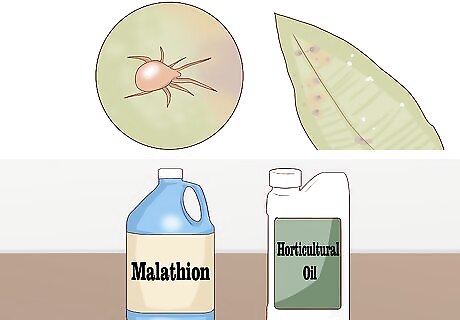
Control insects. Certain insects can damage plumerias, such as mites, flies, or aphids. If you notice insects on your plumeria, apply a horticultural oil or insecticide like malathion to its leaves. It may require more than one application to effectively combat insects. Be sure to follow the directions on the insecticide for best results.
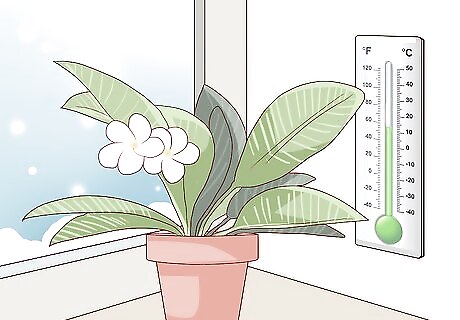
Move it inside for winter. If your plumeria is in a container outside, move it inside for winter. You can also remove the Plumeria from its pot and store it in the garage or basement as long as it doesn't get colder than 55 degrees Fahrenheit (about 13 degrees Celsius). The plumeria must be kept dry and warm during its dormant season. They can survive without sunlight over the winter, but will do better next season if they were stored in light. You can use fluorescent lights if your garage or basement doesn’t have windows.
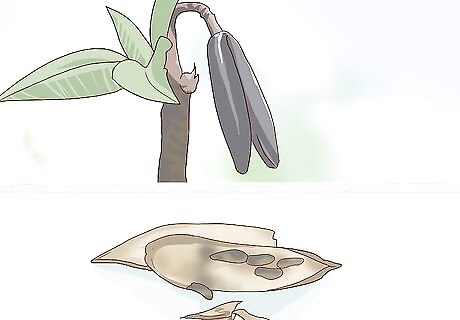
Take cuttings or collect seeds to propagate. In spring or fall, cut the stem tips one to two feet long and allow them to sit for at least two weeks before planting. You can take seeds when the pod splits open. Be sure to keep them dry until you are ready to plant them. Dry seeds last for about three months.
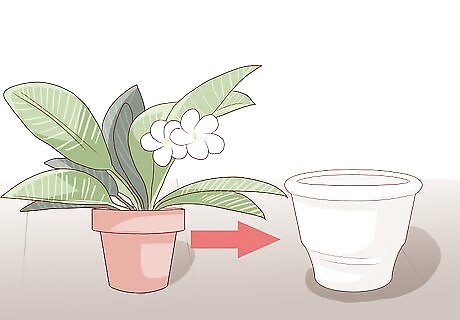
Repot when the roots have filled their container. If your plumeria has outgrown its container, it is time to move it to the next size pot. For example, if it is currently in a 1-gallon pot, you could move it to a 2.5-gallon pot. A plumeria will only grow larger if its roots have room to grow. If the plumeria is too big to repot, you can simply remove the top few inches of soil and add fresh soil on top.




















Comments
0 comment